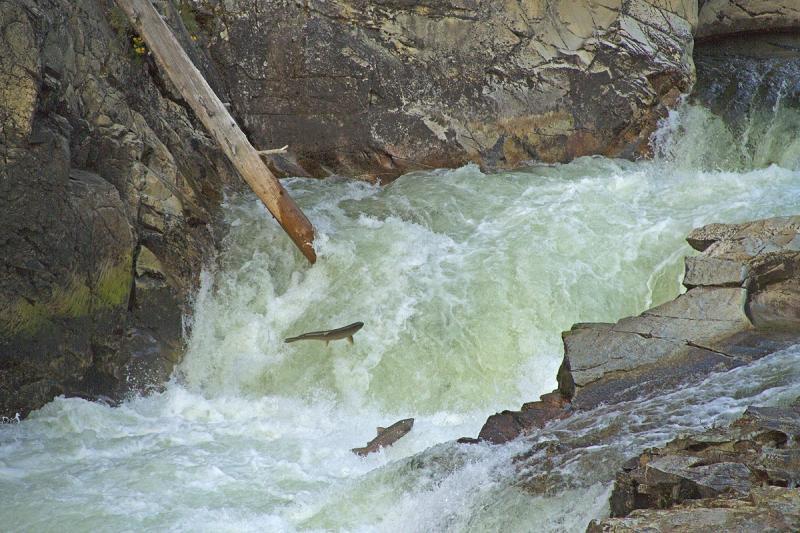
New research asks, “Can Pacific Salmon keep pace with climate change?”
by NOAA Fisheries 6 May 2023 17:51 UTC

Juvenile Salmon migration © NOAA Fisheries
A recent study — the largest of its kind — showed unpredictable changes in juvenile salmon migration timing in response to climate change.
A new study published in the journal Nature Climate Change has found that salmon migration timing is changing in unpredictable ways in response to climate change. Dr. Eric Ward of NOAA Fisheries' Northwest Fisheries Science Center was part of a team of scientists across North America, who analyzed data from 66 salmon populations over 70 years.
The study brought together more than over 50 scientists from government and community organizations across North America. Everyone contributed their expertise and data to better understand this important, but often overlooked life stage.
"This is the longest, most detailed dataset of its kind and offers a pretty unique picture into the potential response of climate change across salmon species," notes Ward.
Climate Change Causes Earlier Salmon Migration
Many salmon species have migration timing that has substantially changed over the last 20 or more years. The study found that pink and chum salmon had the fastest rates of change (migrating 7 days/decade earlier). Other species' average migration timing has not changed.
However, a deeper dive into the data showed greater variation between populations within species than between different salmon species. These population-specific changes were unpredictable with currently available climate and geographic data.
The study's lead author, Dr. Sam Wilson of Simon Fraser University, said, "We were surprised to find that the changes in migration timing were so variable. We expected to see a more consistent response to climate change."
In response to the same level of warming, some populations had earlier migration timing, while others had no change, or even migrated later in the year.
Matching between the timing of juvenile salmon migrations and food availability is one of the conditions experienced in the first few months in the ocean. It can determine whether or not a salmon will survive, and how many adults return.
Concerningly, salmon appear not to be responding to changes in the coastal ocean. This could make mismatches more common under future climate change.
Climate Change is Making it Harder for Salmon to Survive
The study's findings highlight the need for more research on how climate change affects salmon migration. It also underscores the importance of protecting salmon habitats and ensuring that salmon have access to food.
As climate change continues to alter ecosystems, predicting what species or populations might be the most vulnerable can help prioritize conservation. Dr. Jonathan Moore, a co-author of the study, notes "When those changes are difficult to predict, a precautionary management approach is important for the long-term conservation of ecologically, culturally, and economically important species, such as Pacific salmon."
"Climate change is here, and it is changing salmon and their ecosystems. Many of these changes are going to be unpredictable, which calls for protecting both salmon biodiversity and their habitats."